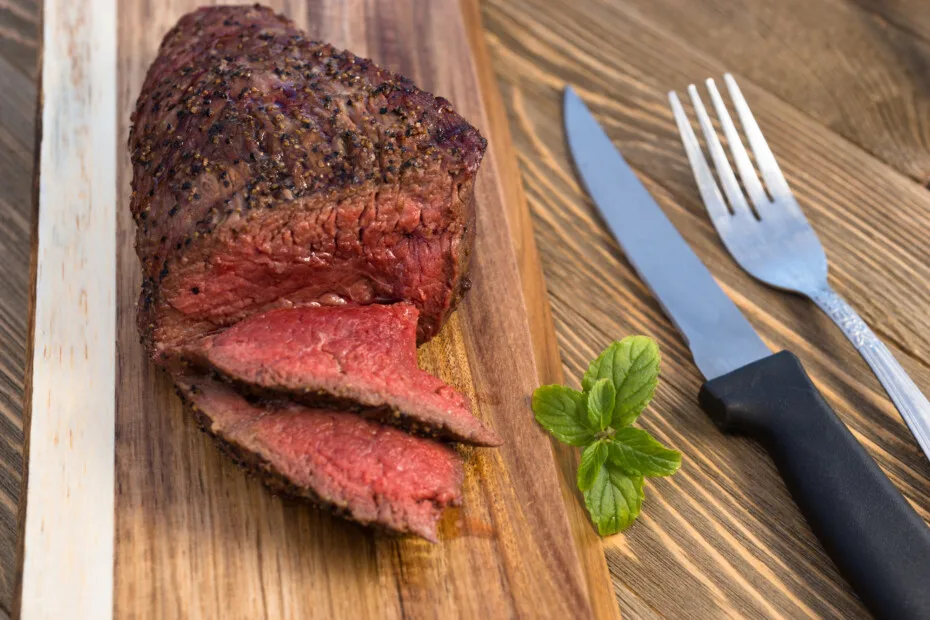Nothing hits the spot like a good sirloin steak. It is a tender yet juicy steak that is relatively inexpensive compared to other cuts of beef such as ribeye or filet mignon.
Contents
Why Is It Called Sirloin?
First things first, why is sirloin called sirloin. Is there any significance behind the name?
Sirloin is derived from the French term “sur loin.” It translates to upper loin.
The English language is known for borrowing words from other languages. Sirloin is no different.
However, the assumption that comes with borrowing words is that the English version is the same term as the non-English word.
For example, most people assume the word sirloin is precisely the same in both English and French languages. However, sirloin in French is actually calledL’aloyau.
What Part of the Cow Is Sirloin?
Sirloin originates in the back of the animal. Sirloin is one of two major subprimals that make the beef loin primal.
The loin primal runs from the 13th ribrun all the way to the back portion of the hip bone.
The interesting thing about butchery is that it differs by region. For example, in the US, butchers carve sirloin steak from the back part of the animal.
It is the same region where porterhouse steaks, club steaks, and T-bone steaks are cut from.
In contrast, British and Australian butchers carve sirloin from the middle of the steer near the top.
This is the same place where American butchers carve the short loin from.
Sirloin can be fabricated into several steaks, including top sirloin and bottom sirloin. Top sirloin is the choice cut when it comes to the top and bottom sirloin. It is specifically marketed under the name top sirloin.
Top sirloin is more tender than its counterpart hence the popularity of this cut. Therefore, you are going to spend a little more on a premium cut of top sirloin.
However, top sirloin can also be used as a cost-effective substitute for higher-priced cuts like beef tenderloin or filet mignon.
In contrast, bottom sirloin is much less tender than its counterparts. It’s also much larger than top sirloin. As the name implies, the bottom sirloin sits below the top sirloin just above the flank portion of the animal.
Bottom sirloin is the lowest quality cut from the sirloin, and it is tough and chewy.
Additionally, bottom sirloin is almost always labeled sirloin steak, so examine the label carefully when purchasing sirloin steak.
What To Look for When Buying Sirloin?
Now that you know which part of the cow sirloin comes from, let’s talk about what to look for when buying sirloin.
If you want tender sirloin steaks, the smaller the cut, the better.
Larger sirloin steaks are fabricated from meat close to the rump. This area gets used quite a bit, so the steaks will be tougher.
Steaks fabricated near the short loin will have a better flavor and a more tender texture.
In addition to this, a bone is a dividing line between the loin primal and the tail end of the sirloin.
The tail end consists of tendons that connect to each other. For this reason, avoid buying the first slice of sirloin because it will be tough.
Furthermore, do not purchase any sirloin cuts labeled tri-tip, butt, or ball-tip, especially if you are cooking steak.
Even if you are not cooking steak, it’s better to go with the top butt as it is easier to cook than the cuts listed above, which come from the bottom sirloin.
Sirloin should have a deep red color with a moist but not overly wet surface. The edges of the cut should be tapered and even, not rough and jagged.
When buying packages of sirloin steak or sirloin roast, the container should be free of tears.
The package of meat should have a little liquid at the bottom of it. However, the sirloin should not be drowning in its own juices.
The sirloin should have a firm texture and feel cold when touched.
If the sirloin is soft and warm, do not purchase it; leave it in the meat display case and go to another store.
How To Cook Sirloin Steak
Cooking sirloin steak is relatively easy. However, you must not overcook the sirloin steak, or you will end up with a tough, chewy sirloin steak rather than a tender one.
First, pat your sirloin steaks dry with paper towels. Drying the exterior surface of the steaks removes excess moisture.
This, in turn, allows the sirloin steaks to develop a rich brown crust.
Place a cast-iron skillet over medium-high heat and add 1-2 tablespoons of oil. Season the sirloin steaks with salt and pepper.
Add the sirloin steaks to the skillet and cook it for 3-4 minutes.
Turn the sirloin steaks over and cook them for an additional 3-4 minutes until it has a temperature of 125°F.
You can baste the sirloin steaks with butter, garlic, and herbs such as rosemary once you flip the steaks over.
Remove the sirloin steak from the skillet and place them on a warm plate.
Let the sirloin steaks rest for 5 minutes before carving and serving them.
What Cut of Meat Is the Closest Top Sirloin?
There are a few good alternatives if you are looking for a substitute for sirloin steak.
Ribeye and New York strip steaks are the best substitute for sirloin steak.
Yes, they are more expensive. However, these steaks have the same delicious beefy flavor that sirloin has, and they are more tender than sirloin steak, so you’re really getting a deal with ribeye or strip steak.
However, if you are looking for a cheaper option, round steak or flank steak are also great options.
They both have the same great beefy flavor and are super affordable.
Final Thoughts
If you are going to indulge in sirloin steak, you should at least know where it comes from.
Know that you know where this delicious juicy steak comes from; you can share your newfound appreciation for sirloin steak with your friends and family.
You might also be interested in the following:
- What Part of the Cow Is Tri Tip
- What Part of the Cow Is Barbacoa
- What Part of the Cow Is Ground Beef
- What Part of the Cow Is Prime Rib
- What Part of the Cow is Ribeye
- What Part of the Cow Is Filet Mignon
- What Part of the Cow Is Oxtail
- What Part of the Cow Is Corned Beef
- What Part of the Cow Is Brisket

I have been smoking and grilling meat from an early age and enjoy sharing my knowledge and expertise through the hundreds of articles I have written about BBQ. I hope to make everyone’s BBQ journey that little bit easier.

